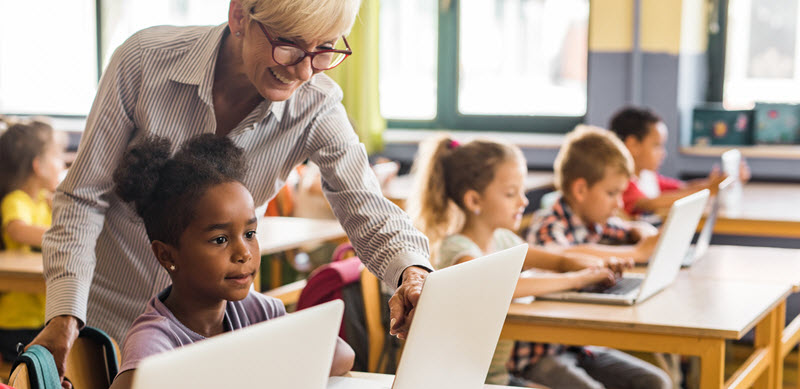| By Gracelyn A. Graham |
Last July, the Mississippi State Board of Education (SBE) announced that schools would return to in-person classes starting with the 2021–2022 school year.1 The SBE even tasked the local department of health to create COVID-19 policies for K-12 schools.
This situation isn’t new in our country, much less in the world. As students go back to school, teachers are expected to step up the classroom experience after more than a year of virtual learning.
Here are four technologies educators can leverage to enhance on-site education:
Online Lesson Planning
One of the challenging parts of on-site learning is creating a lesson plan that delivers engaging content for students. Luckily, plenty of online tech tools can assist teachers in personalizing content, structure, and learning activities, whether for remote or in-person environments.
The Gale In Context: For Educators online lesson-planning tool acknowledges a classroom’s diverse learning needs by dividing its content into three levels: basic, intermediate, and advanced. The levels can be accessed through a centralized app and are easy to use.
Did you know that the Gale In Context platform provides on-demand text and voice translation to over 30 languages and has other accessible features for educators with disabilities? It’ll allow you to create the perfect lesson plan, whatever your needs or your students’ needs may be.
Virtual Reality
You can bring lessons to life with virtual reality (VR) technology, taking your students on immersive educational journeys. For example, you can take them on virtual field trips or create engaging 3D content that will encourage them to explore certain topics. VR can also help younger students tackle topics that may scare them—like going underwater or exploring a jungle.
VR simulations need specialized headsets to function, which are becoming more accessible at a much lower cost. They’re built using PCBs with enough power integrity to support complex features, like running simulations.2 This power-filled layout is also the reason why portable VR headsets can now be used at school for hours on end with minimal charging, providing a more convenient means of learning.
Another convenient option that doesn’t require a headset is Gale Interactive: Science—a virtual lab that gives students in middle and high school the power to see beyond static text and embrace learning outside the classroom. Paired with interactive 3D models to deliver a virtual laboratory simulation experience, students can entertain their curiosity and inspire grade improvement through an experience that allows zooming in, rotating, or pulling models apart to explore and experiment with complex scientific topics.
Multimedia Tools
Say goodbye to chalk and blackboards—and hello to laptops and projectors. Research has shown that the use of multimedia presentations in teaching improves students’ capability to grasp the day’s lesson.3 Aside from providing a more engaging teaching format, the array of varied content that can be shown on-screen is incredibly diverse. For example, you can incorporate photos, videos, and music in your PowerPoint and Prezi presentations. You can even spice up your lessons with animations, maps, and interactive pop-ups.
At the end of the day, you can upload the presentations to a shared folder, which your students can access later, allowing them to revisit the material on their own time.
Gamified Learning Platforms
Research suggests that games can be used to increase student motivation and engagement.4 Games set challenges and goals to be attained, encouraging players to get involved in an active learning process. And if they’re implemented effectively, they can be used to educate students on many topics, such as history, literature, and science, as they’re integrated into the narrative of the games.
There are game-based learning platforms already in use in educational institutions. Kahoot! can be used to create multiple-choice questionnaires, like quizzes and assignments. Because the platform is compatible with multiple devices, it’s easy to access for students and educators.
Now that students are gearing up to resume in-person classes, it’s only right for teachers to provide them with the best on-site experience using the appropriate technologies. There’s a wealth of them online—you just need to choose the ones that work best with your teaching style and your students’ needs.
1. Howell, Kaitlin, “Mississippi Education Board Sets Policies to Resume In-person Learning at Schools,” WJTV News, July 20, 2021.
2. “Power Integrity,” Altium (website), accessed August 2021.
3. Abdulrahaman, M.D. et al., “Multimedia Tools in the Teaching and Learning Processes: A Systematic Review,” Heliyon, November 6, 2020.
4. Nina Dorfner and Rana Zakerzadeh, “Academic Games as a Form of Increasing Student Engagement in Remote Teaching,” Biomedical Engineering Education, March 2, 2021.
Gracelyn Andi Graham is an online blogger covering the latest trends and news. She has always been active online and hopes that her articles prove useful for those looking for new ways to create websites and social media pages. She’s happily married with two kids.

